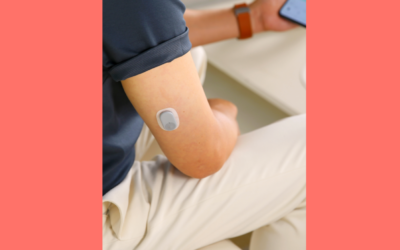By Sophie Davis-Cooper on June 14, 2022
In the height of the pandemic, Leicestershire Partnership NHS Trust and our team joined forces to implement a virtual ward for symptomatic COVID-19 patients. The new service successfully extended hospital capacity while closely monitoring patients in the comfort of their own homes.
Now, we are sharing the five main lessons we learned from launching the project in hope of helping others at the start of their virtual ward journey.
-
Rome wasn’t built in a day
At Glenfield Hospital, the team were already working under immense pressure from the pandemic, so the idea of adopting a new way of managing patients with technology could have been quite overwhelming.
This is why we started small and then expanded the service over time. We found starting with a small cohort of patients gave the team chance to become comfortable with the new system and allowed for any teething problems to be straightened out. We took on board the clinicians’ and patients’ feedback and tweaked the software to make it work better for them.
The virtual ward should evolve over time based on your learnings. This process simply cannot be rushed.

-
Governance and data
In order to deliver excellent patient care and to be able to judge the success of the virtual ward, you need to be collecting the right data and decide how you are going to use it. We realised that a clinical oversight group should have been formed at the beginning of the process to help create a governance structure and analyse data.
“… it became abundantly clear to us within weeks that we needed a clear governance structure around us so that we could have real oversight from not only a clinical perspective, but also an operational perspective going forward.”
– Professor Sudip Ghosh, Consultant Physician & Deputy Medical Director, Leicestershire Partnership NHS Trust

At the planning stage, all parties should come together to decide how the project will be evaluated and what a successful virtual ward looks like.
“And that should include not just hard data around length of stay, potentially mobility and mortality, but actually data around quality of life indicators. Because ultimately, it’s not always about whether you are getting the patient to live longer, but are the patients living better in the time they have with us…”
– Professor Sudip Ghosh, Consultant Physician & Deputy Medical Director, Leicestershire Partnership NHS Trust
-
The clinicians’ perspective
One of the most valuable lessons we learned was the importance of engaging clinical teams in the early stages of the planning process. From design to feedback, take a look at Dr. Noel O’Kelly’s top five tips for engaging clinicians with virtual wards.
-
The patient perspective
It’s equally important to engage with patients. We found that once the virtual ward software was explained and demonstrated to the patient, and they had the opportunity to ask questions, they generally felt happy and confident to be onboarded.
“I onboarded over 100 patients and I can almost count on one hand, how many patients were actually resistant, and were non-compliant and didn’t end up going home on it. And I think that just shows, you know, the willingness of the patients that they want to be involved in their own healthcare and using a new system like this.”
– Daisy Savage, Rehabilitation Technical Instructor, Leicestershire Partnership NHS Trust
A barrier that was identified soon after going live was onboarding patients who don’t speak English. Thankfully, staff members and family members were able to assist, but this is an area we are currently developing.
The team expected age to be a barrier as well. However, to their surprise, many elderly patients embraced the technology with the oldest boasting 93 years of age.

-
Responsibilities & Trust
Trust comes from all parties involved having aligned values and goals.
“Align your vision very clearly with the partners because if they are not aligned, to me, it’s like getting on a boat with two sets of people rowing off in different directions and they will lead to the boat sinking or going round in circles.”
– Professor Sudip Ghosh, Consultant Physician & Deputy Medical Director, Leicestershire Partnership NHS Trust
When everyone is on the same page, responsibilities can be shared out to ensure patients smoothly transition through the pathway. This is where having a good, comprehensive SOP comes into play so everyone knows what they’re doing and what do to when things go wrong.
When the stakeholders trust that all parties are just as invested in patient wellbeing and safety as they are, planning and organising becomes that little bit easier.

This blog follows our live webinar event, ‘Lessons from a Virtual Ward Launch: What we wish we knew‘. Our clinical director, Dr Noel O’Kelly, was joined by the NHS team in charge of the rollout to discuss the successes, challenges and everything they’d do different next time. Want to see what you missed? We recorded the session, so you can watch the recording now.


